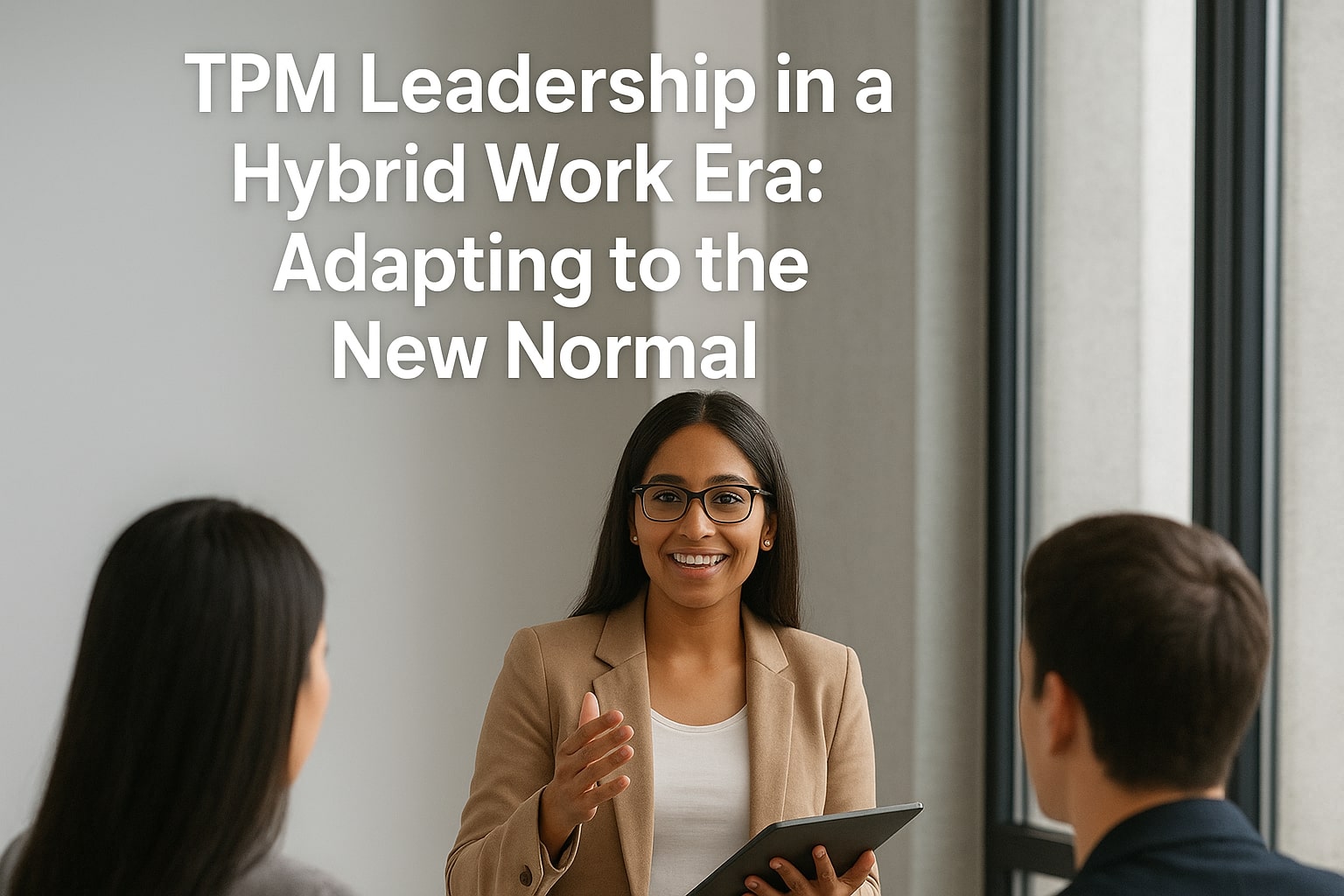Introduction
Technical Program Managers (TPMs) are responsible for accelerating execution, removing blockers, and ensuring successful delivery—yet they don’t directly manage engineers. So, how can TPMs influence engineering productivity without stepping on toes or becoming micromanagers?
This guide explores the subtle art of driving productivity while preserving team autonomy and trust. If you're preparing for a TPM interview or improving your performance on the job, understanding this balance is essential.
Why Engineering Productivity Matters for TPMs
The TPM’s Role in Productivity
TPMs are expected to:
- Remove inefficiencies in the software development lifecycle
- Identify blockers early and proactively resolve them
- Align priorities with engineering and product leaders
- Track velocity, output, and quality metrics without undermining the team
But none of this works if you rely on command-and-control tactics. TPMs must lead by influence, not authority.
Before the Interview: Build a Framework to Showcase Productivity Ownership
1. Understand Developer Workflow and Challenges
Be familiar with:
- Code review processes and CI/CD pipelines
- Developer velocity blockers (tech debt, unclear requirements, over-scoping)
- Engineering rituals (standups, retrospectives, planning meetings)
2. Learn Key Engineering Productivity Metrics
Know how to discuss:
- Sprint velocity and burn-down charts
- Cycle time and lead time
- Number of bugs or customer incidents per release
- Deployment frequency and mean time to recovery (MTTR)
3. Build Stories Around Your Influence
Interviewers might ask:
- “How do you ensure engineering teams stay productive?”
- “Describe a time when you improved team delivery without pushing too hard.”
- “How do you spot and resolve inefficiencies in technical execution?”
Have examples that highlight collaboration, data-driven decisions, and trust.
During the Interview: Demonstrate Leadership Without Overreach
1. Talk About Removing Roadblocks, Not Pushing Timelines
Frame your responses to emphasize:
- How you spotted a delivery bottleneck and facilitated a fix
- How you shielded engineers from scope creep
- How you worked with product to reprioritize tasks to reduce burnout
2. Highlight Partnership with Engineering Managers
Instead of dictating engineering tasks, describe how you:
- Sync with EMs regularly to understand team health
- Use metrics as conversation starters, not judgment tools
- Support planning sessions and help break down ambiguous work
3. Communicate Empathy and Trust
Let interviewers see that you:
- Respect team autonomy
- Encourage feedback loops
- Use retrospective learnings to iterate on process
After the Interview: Reflect on Your Messaging
Did You Convey Value Without Micromanagement?
Post-interview, ask yourself:
- Did I show I can influence productivity respectfully?
- Was I clear about using data to improve processes?
- Did I offer concrete examples of improving delivery outcomes?
Seek peer or mentor feedback if you’re unsure how your responses landed.
Master the Balance with KRACD.com
At KRACD.com, we help TPMs develop the critical skill of leading productive teams without crossing the line into micromanagement. Our expert-designed training includes:
- Real-world productivity case studies
- Strategies for data-informed influence
- Interview simulations on team collaboration and execution
- One-on-one coaching with senior TPM mentors
Accelerate engineering delivery the right way—get hands-on training at KRACD.com.
Conclusion
Being a productivity driver without micromanaging is a key TPM competency. It requires empathy, insight, and strategic execution. By focusing on support, alignment, and smart metrics—not control—you’ll earn trust and deliver results.
Whether you're in interviews or on the job, lean into this leadership style—and refine it with guidance from KRACD.com.
FAQs
1. What does 'influencing without authority' mean for TPMs?
It means driving outcomes by aligning, communicating, and unblocking—not by giving orders. TPMs coordinate and lead without being someone’s direct boss.
2. How do I track engineering productivity without micromanaging?
Use data like sprint velocity or lead time to spot trends, but always involve engineers in discussing causes and solutions. Focus on process, not performance policing.
3. What if engineering push back on your suggestions?
That’s expected. TPMs must collaborate, ask questions, and adjust based on team feedback. Avoid imposing solutions—co-create them.
4. Do TPMs need technical depth to influence productivity?
Yes, a basic understanding of architecture, dev workflows, and tooling helps TPMs speak engineers' language and offer meaningful insights.
5. How can KRACD.com help with this skill?
KRACD.com provides frameworks, coaching, and practice scenarios to help TPMs enhance engineering collaboration and impact outcomes without control-based tactics.

.jpg)

.jpg)

































.webp)








